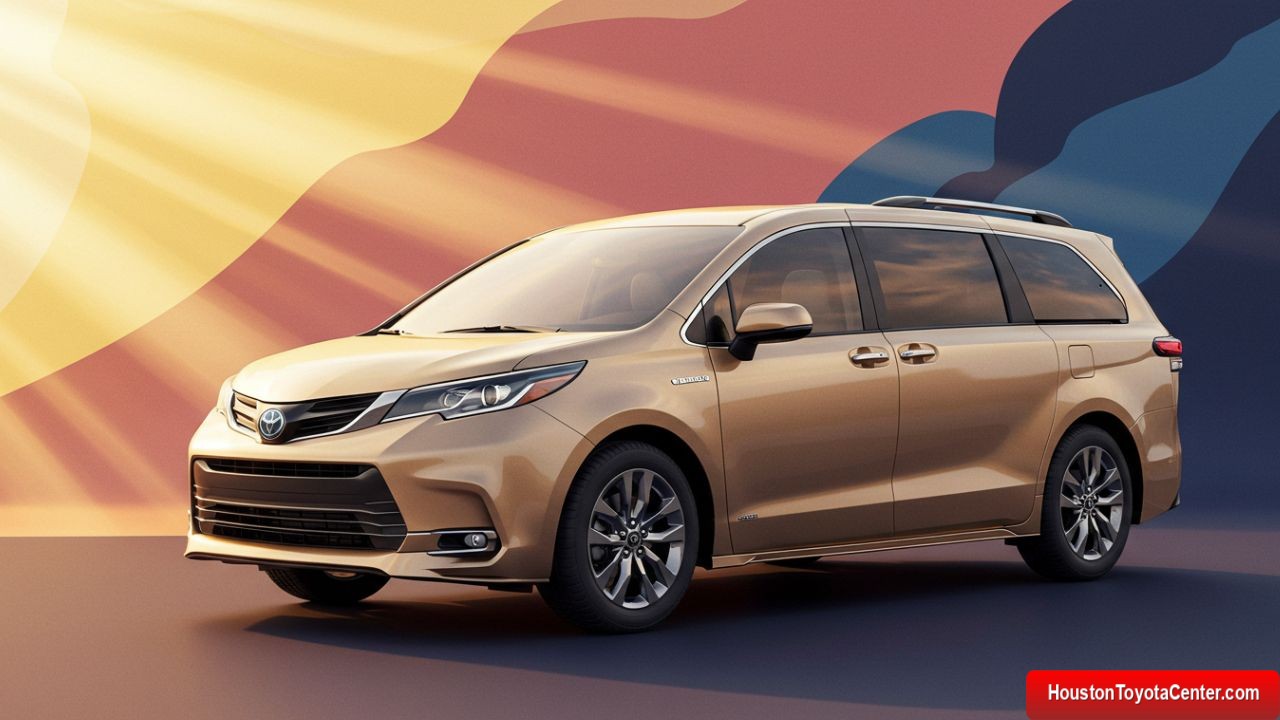The automotive industry has undergone seismic shifts in recent years, driven by electrification, sustainability, and evolving consumer needs. Amid this transformation, the minivan—a segment often overshadowed by SUVs—has quietly staged a comeback. Leading this resurgence is the Toyota Sienna Hybrid, a vehicle that redefines what a family hauler can be. Combining Toyota’s legendary reliability with cutting-edge hybrid technology, the Sienna Hybrid isn’t just an evolution—it’s a revolution.
This deep dive explores how the Sienna Hybrid challenges conventions, from its eco-friendly powertrain to its tech-laden interior. We’ll dissect its engineering, design, and real-world performance while comparing it to rivals like the Honda Odyssey and Chrysler Pacifica Hybrid. By the end, you’ll understand why this minivan is a game-changer.
A Brief History of the Toyota Sienna: From Humble Beginnings to Hybrid Dominance
Introduced in 1997, the Toyota Sienna was designed to compete with the Dodge Caravan and Honda Odyssey. Its first two generations prioritized practicality and reliability, but it wasn’t until the third generation (2010–2020) that the Sienna embraced bold styling and premium features. However, the 2021 redesign marked a turning point: Toyota dropped the V6 engine, committing fully to a hybrid powertrain across all trims.
This decision was risky. Minivans are often judged by their towing capacity and horsepower—metrics where hybrids traditionally lag. But Toyota’s gamble paid off. The 2021 Sienna Hybrid became the first and only hybrid minivan in North America, offering unparalleled fuel efficiency without sacrificing utility.
FREE: Quickly identify and understand problems with your vehicle 🚘
CLICK HEREThe Heart of the Revolution: Toyota’s Hybrid Synergy Drive
At the core of the Sienna Hybrid is Toyota’s fourth-generation Hybrid Synergy Drive system. Pairing a 2.5L Atkinson-cycle four-cylinder engine with two electric motors, it delivers 245 combined horsepower. While this is less than the outgoing V6’s 296 hp, the hybrid system compensates with seamless power delivery and exceptional efficiency.
Key Specifications
| Component | Details |
|---|---|
| Engine | 2.5L DOHC 16-valve Atkinson-cycle inline-4 |
| Electric Motors | Two permanent-magnet synchronous motors |
| Combined Output | 245 hp |
| Transmission | Electronically Controlled Continuously Variable (ECVT) |
| Fuel Economy (AWD) | 35 MPG city / 36 MPG highway |
| Fuel Economy (FWD) | 36 MPG city / 36 MPG highway |
| Battery | 1.9 kWh Nickel-Metal Hydride (Ni-MH) |
The shift to hybrid power slashed fuel consumption by nearly 50% compared to the previous V6 model. For a family driving 15,000 miles annually, this translates to **700+inannualfuelsavings∗∗(assuming700+inannualfuelsavings∗∗(assuming3.50/gallon).
Design Philosophy: Space, Comfort, and Flexibility
Toyota’s “Japan-USA” design team focused on creating a minivan that felt both premium and functional. The Sienna Hybrid’s exterior features a rakish silhouette, aggressive LED lighting, and available 20-inch wheels—a far cry from the boxy minivans of yesteryear.
Interior Innovations
- Seating for 8: Second-row lounge-style seats (optional) offer legroom comparable to business-class airlines.
- Cargo Capacity: 101 cubic feet with rear seats folded—enough for 4×8-foot sheets of plywood.
- Dual Panoramic Sunroofs: Flood the cabin with natural light.
- 18 Cup Holders: Because no family adventure is complete without hydration chaos.
A standout feature is the Ultra-Long Slide Second-Row Seats, which adjust nearly 25 inches forward or backward. This allows parents to prioritize legroom, cargo space, or proximity to toddlers (“Are we there yet?” mode).
Performance: Efficiency Meets Capability
Critics initially questioned whether a hybrid minivan could handle highway merges or mountain roads. The Sienna Hybrid answers emphatically:
- Acceleration: 0–60 mph in 7.7 seconds (comparable to the Honda Odyssey’s 6.6 seconds but with smoother delivery).
- All-Wheel Drive: Available AWD uses a separate rear-mounted electric motor, enhancing traction without a driveshaft tunnel.
- Towing Capacity: 3,500 lbs—sufficient for small trailers or jet skis.
While not a sports car, the Sienna Hybrid’s linear power delivery and adaptive suspension make it surprisingly agile. The ECVT transmission eliminates gear hunting, and regenerative braking recaptures energy without the “grabby” feel of earlier hybrids.
Safety: A Fortress on Wheels
Toyota’s Safety Sense 2.0 suite comes standard, including:
- Adaptive Cruise Control with lane tracing.
- Automatic Emergency Braking with pedestrian detection.
- Road Sign Assist and Lane Departure Alert.
In IIHS testing, the Sienna Hybrid earned a Top Safety Pick+ rating, thanks to its high-strength steel frame and 10 airbags. Optional features like a Bird’s Eye View Camera and Rear-Seat Reminder add layers of protection for distracted parents.
Competitive Landscape: How the Sienna Hybrid Stacks Up
Let’s compare the Sienna Hybrid to its closest rivals:
| Model | Powertrain | MPG (Combined) | Starting Price | Key Drawbacks |
|---|---|---|---|---|
| Toyota Sienna Hybrid | 2.5L Hybrid AWD | 35 | $38,385 | Less horsepower than V6 rivals |
| Honda Odyssey | 3.5L V6 FWD | 22 | $38,840 | No hybrid option; lower MPG |
| Chrysler Pacifica Hybrid | 3.6L PHEV | 30 electric / | $49,995 | Higher price; shorter electric range (32 miles) |
The Sienna Hybrid’s combination of price, efficiency, and standard AWD gives it a unique edge. While the Pacifica Plug-In Hybrid offers electric-only driving, its higher cost and complex powertrain may deter budget-conscious buyers.
Environmental Impact: Beyond MPG
The Sienna Hybrid reduces CO2 emissions by 33% compared to the average minivan. Over 100,000 miles, this equates to 18 metric tons of CO2 saved—equivalent to planting 420 trees. Toyota also uses eco-friendly materials, including recycled plastics for seat fabric and soybean-based foam.
User Reviews: Real-World Insights
Owners praise the Sienna Hybrid’s fuel economy and versatility but note minor quirks:
- Pros: “35 MPG with three kids and a golden retriever? Yes!”
- Cons: “Infotainment feels dated; where’s wireless CarPlay?”
The Future of Minivans: Electrification and Autonomy
Toyota’s commitment to hybrids paves the way for a potential Sienna Plug-In Hybrid or even a hydrogen variant. With autonomous driving tech on the horizon, future minivans could become mobile living rooms—safe, efficient, and self-driving.
Conclusion: The New Gold Standard
The Toyota Sienna Hybrid isn’t just a minivan—it’s a statement. By marrying hybrid efficiency with uncompromised utility, Toyota has reimagined a segment many thought was stagnant. For families seeking a vehicle that’s kind to both their wallet and the planet, the Sienna Hybrid stands alone.
As the automotive world races toward electrification, the Sienna Hybrid proves that innovation and practicality can coexist. Revolution, indeed.


Leave a Reply